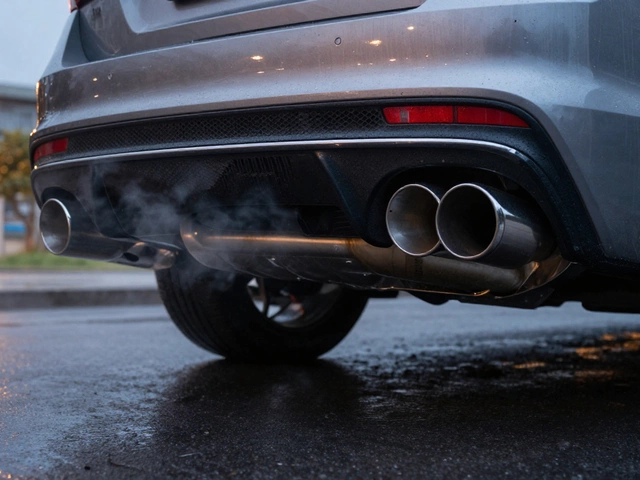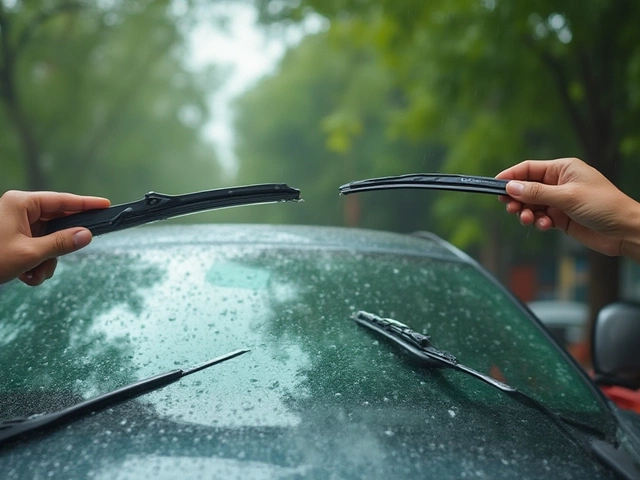Few dashboard lights spike worry like that oil can symbol. Most folks see it, wonder if they can make it home, and keep going while silently negotiating with fate. Believe it or not, I’ve been there with my kids in the backseat, hoping I wouldn’t end up stranded on a busy road.
So, can you drive with low oil? In short: you’re gambling. Your engine relies on oil for lubrication and cooling. When oil runs low, metal parts grind against each other, heat builds up, and things can get ugly fast. You may get away with a short drive, a few miles at most, but every minute adds risk. Some engines are tougher than others, but nobody’s engine is invincible.
- What Low Oil Really Means
- How Long Can You Safely Drive?
- Risks of Driving With Low Oil
- Spotting Signs of Trouble
- What To Do If You're Stuck Without Oil
- Tips to Prevent Low Oil In the First Place
What Low Oil Really Means
You see the words low oil and think, “How bad can it be?” But low oil isn’t just about running out of a slippery liquid. Your car’s engine uses oil way more than you use ketchup on fries—it needs oil to stop its moving parts from ripping themselves apart. When the oil level drops, you’re left with risky metal-on-metal action that heats things up far quicker than most folks realize.
There are two main ways you’ll find out you’re running low on oil: the dipstick check, or that dreaded dashboard warning light. A dipstick is an old-school but reliable way to see what’s actually going on in your engine. If the oil’s barely showing—or not even touching the stick—you’re running way too close to empty. But if the oil warning light comes on while you’re driving, your car’s sensors are already telling you it’s crunch time. That light isn’t suggesting a casual top-off next week; it’s saying your engine is starving right now.
A lot of people get confused between low engine oil and dirty oil. Dirty oil still lubricates (just not as well), but low oil means there’s simply not enough to reach places inside the engine. Oil doesn’t just disappear, either. It usually means you’ve got a leak, your engine’s burning oil, or in older cars, your gaskets and seals just aren’t holding up anymore.
Here’s a rough idea of why a healthy oil level matters:
| Oil Status | Effect on Engine |
|---|---|
| Normal | Engine runs cool and smooth |
| Low (light on) | Heat builds, risk of wear and damage rises fast |
| Very Low/Empty | Metal parts rub, catastrophic engine failure likely |
Ignore it and you’re betting that those expensive metal pieces won’t seize, warp, or break. The truth? They usually lose that bet. That’s why whenever you spot the low oil warning, you should treat it like a fire alarm, not a low battery notification.
How Long Can You Safely Drive?
If the engine oil warning light pops on, you might wonder if you can nurse your car to the repair shop—or at least to the next exit. Here’s the no-nonsense truth: there’s no magic number of miles that’s "safe" once your oil level drops too low. Some sources say you might get away with about 10 to 20 minutes of driving, maybe less. But the damage starts way before you hear anything strange from under the hood.
Let’s break it down. When oil is low, crucial engine parts—like pistons, cams, and bearings—run hotter and wear out faster. A few last miles with low engine oil can mean thousands of dollars in repairs if you push it too far. The oil warning light usually means your oil pressure is dangerously low—not just "a little low." At that point, you’re running on borrowed time.
- If your oil dipstick shows no oil at all, do not drive. Call for help or add oil immediately.
- If the dipstick is just barely reading, it’s safest to avoid driving. If you absolutely have to go, keep it under 5 miles at low speeds. Every engine is different, but no one gets a free pass here.
- Ignoring the oil warning light guarantees some level of engine damage—the question is just how bad it gets.
Just to give you an idea, auto repair shops see engines seize up in as little as 15 minutes of driving with little or no oil. In 2023, a survey of independent mechanics revealed that nearly 70% of catastrophic engine failures linked to low oil happened within 10 miles of the warning light turning on. So it’s not just scare tactics—modern engines are designed with tight tolerances that don’t forgive running dry.
Bottom line: If you see the oil light, stop as soon as you can. Don’t try to “just get home.” A short walk or a tow is way better than a totaled engine.
Risks of Driving With Low Oil
Keeping your engine running on low oil is playing with fire. When oil drops below a safe level, it can't cushion or cool engine parts. What happens next isn’t just inconvenient—it can be seriously expensive.
First up is increased friction. Engine components move wicked fast, and without enough engine oil, they’ll start grinding together. This creates heat and, even worse, fast wear. You’re actually shaving years off your engine, all for the sake of a short drive.
Another risk: overheating. Oil pulls heat away from the engine. With low oil, the temp gauge may suddenly spike. Ignore it, and you risk a warped cylinder head, blown gaskets, or even a seized engine—meaning everything locks up and your car's dead on the spot.
Think oil warning lights are just for show? Auto mechanics see engines come in all the time that suffered real damage because drivers kept going after the oil warning light flipped on. In fact, according to a 2023 AAA report, major engine damage due to running too low on oil ranked high on the list of preventable car repairs.
| Risk | Potential Cost |
|---|---|
| Bearing wear | $1,000 - $3,000 |
| Overheated engine repair | $1,500 - $4,000 |
| Full engine replacement | $4,500 - $10,000 |
Plus, there’s the risk of your car just stopping in the middle of the road—especially if it’s older or has a lot of miles. That’s not only frustrating, it can be plain dangerous if it happens in traffic or on a busy highway.
If you keep driving with low oil, it’s not a question of "if" you’ll have problems, but "when." The warning light’s not lying—ignore it and you’re rolling the dice with your engine and your wallet.

Spotting Signs of Trouble
Your car will drop plenty of hints when it’s running on low oil. Ignore those, and you risk turning a quick fix into a massive headache. The most obvious sign? That oil warning light. When it flicks on, your oil pressure might already be dangerously low.
But there’s more to watch for. Here’s what usually shows up when things get dicey:
- Engine knocking or ticking: A tapping sound coming from under the hood means metal parts aren’t getting enough lubrication.
- Burning oil smell: This means oil might be leaking onto hot engine parts, or the engine’s getting too hot.
- Overheating: Low engine oil means less cooling for the engine. That temp needle will start creeping up.
- Poor performance: If pressing the gas pedal feels sluggish or rough, the engine might be struggling without enough oil.
One thing most people miss: sometimes your car will start hard or even stall. If that happens with one of the other symptoms, stop driving. You’re risking full-blown engine damage.
According to the experts at J.D. Power, "Failing to address low oil levels is one of the most common causes of major engine failures, yet it can usually be prevented by noticing the early warning signs."
“Most major engine failures start with overlooked oil-related alerts. Paying attention to changes in performance or odd noises can save thousands in repairs.” — J.D. Power Auto Service Team
Sometimes, the check engine light joins the party. It's not always about driving with low oil specifically, but if it lights up with other oil symptoms, figure you’ve got a ticking clock.
For folks into numbers, here’s how quickly problems can escalate depending on the oil level:
| Oil Status | Estimated Safe Drive Time | Common Warning Symptoms |
|---|---|---|
| Low (above minimum line) | Up to 30 miles | Oil light flickers at stops |
| Very low (at/below minimum) | 5-10 miles | Engine noise, poor acceleration |
| No oil showing on dipstick | 1-2 minutes | Loud knocking, severe overheating |
Don’t count on luck. If you notice any of these warning signs, pull over, turn off the engine, and check the engine oil right away. That small move can save you repairs and a lot of money.
What To Do If You're Stuck Without Oil
So, you’re out driving, maybe running late for school pickup, and that engine oil warning light pops on. You check the dipstick—bone dry. Now what? First rule: don’t keep driving. Engines running on low or no oil can seize fast, sometimes within minutes. The real-time damage can easily run into the thousands, or worse—complete engine failure.
Here’s what you should actually do if you find yourself stranded with no engine oil:
- Pull Over Safely. Find a safe spot off the road. Turn the car off as soon as possible to avoid more damage.
- Let the Engine Cool. Don’t even think about popping the hood right away unless you love the smell of burnt knuckles. Wait at least 15–20 minutes.
- Check Oil Level. If you haven’t done it already, pull out the dipstick, wipe it, reinsert, and check the level to confirm it’s really low or empty.
- Add Oil if You Have It. Stash a bottle of the right engine oil in your trunk—trust me, it’s a lifesaver. If you have any oil (even the wrong grade), add it. It’s better than nothing for a short limp to the shop.
- Don’t Drive Without Oil. If your oil is totally gone and you have no backup, call roadside assistance. Towing costs less than a new engine.
If you're thinking of grabbing the next jug of random oil from a gas station, that’s actually okay in emergencies—just get the proper engine oil changed out as soon as you can. Running the engine bone dry isn't an option, not even just to “make it a little further.”
Worried about the cost? Here's a rough comparison table:
| Situation | Typical Cost (USD) |
|---|---|
| Add a quart of oil | $8–$15 |
| Roadside oil delivery | $40–$75 |
| Engine replacement | $4,000–$7,000 |
You do the math. Toss a spare bottle of engine oil in your trunk for peace of mind. It’s way cheaper than the risk.
Tips to Prevent Low Oil In the First Place
Stressing about low oil doesn’t have to be part of driving. Simple habits can keep your engine oil at the right level and your car running smoothly. Here’s what works in real life, not just in the owner’s manual.
- Check your oil regularly. Once a month is enough for most cars, but if yours leaks or burns oil, make it every couple weeks. All you need is a rag, your dipstick, and a minute.
- Know your oil change interval. Many cars are fine with 5,000 to 7,500 miles between oil changes, but if you do short trips, have an older ride, or tow stuff, you might need to change it sooner. Ignore the generic advice—use what your manual and real-life conditions suggest.
- Watch for leaks. Smell burning oil? See stains under your car? Fix leaks right away. Just topping off oil doesn’t replace a cheap gasket—catch that stuff early.
- Use the right oil. If your car calls for synthetic, don’t cheap out with conventional. Viscosity matters too, especially if you’re in a spot with big swings in temperature. The wrong oil breaks down faster and leaves you with low oil when you least expect it.
- Pay attention to warning lights. Don’t ignore that oil warning light or odd noises from the engine. They’re not joking around or making suggestions—they’re trying to save you from a fried engine.
Quick fact check: AAA says nearly 21 million drivers nationwide are overdue for an oil change at any time. That’s a lot of people dodging a major repair bill just by paying attention to a $30 jug of engine oil.
Staying ahead of low oil comes down to being slightly proactive. The little actions above can seriously head off headaches and help you avoid the “can I risk it?” game with your car.











Write a comment